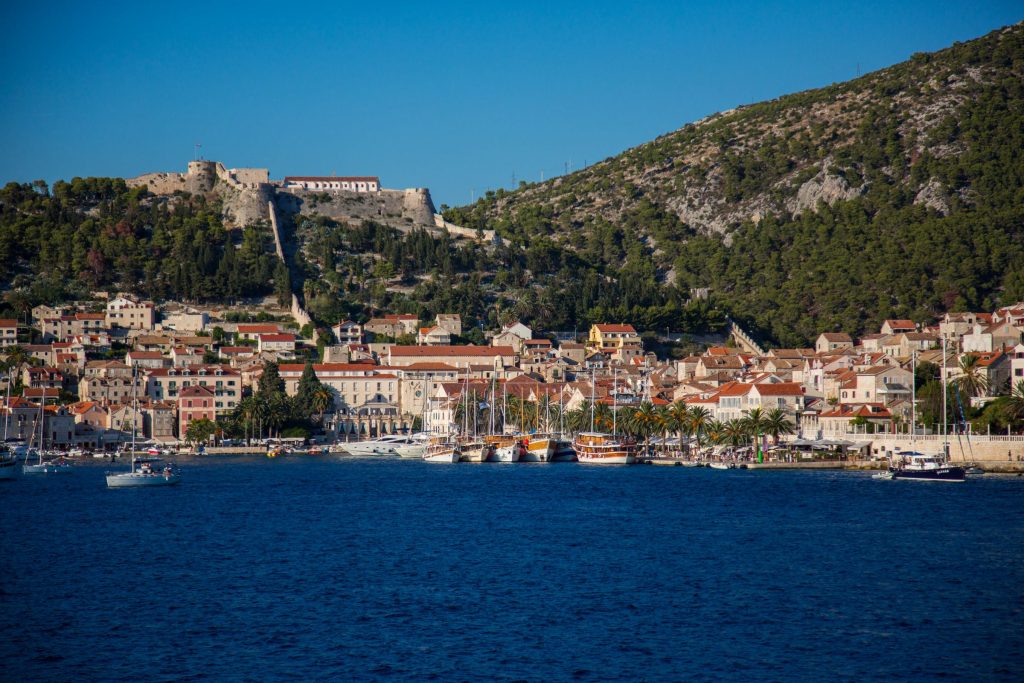December 11, 2017 – Croatia is one of the hottest tourist destinations in Europe these days, as millions head to discover the magic of the Adriatic coast and its 1,000 islands. But there is another type of tourism much less-known, which is offering exceptional quality and value 365 days a year. 25 things to know about why Croatia and its capital Zagreb are set to be the next best thing in health tourism in Europe.
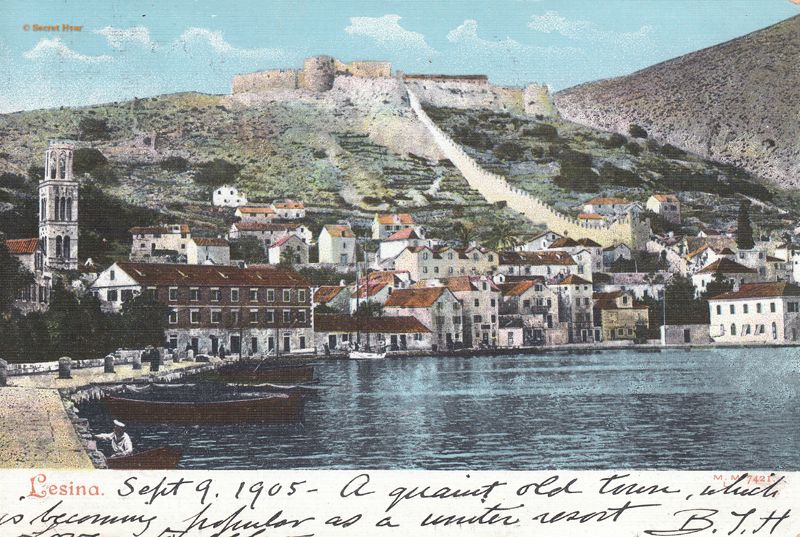
(Hvar in 1905, a winter resort – photo credit Secret Hvar)
- Croatia is the birthplace of organised tourism in Europe, 150 years in 2018, based on health tourism.
Croatia may be one of the trendiest tourist destinations in the world right now, but it is a little-known fact that organised tourism in Europe began in Croatia. On the island of Hvar in fact. Today, Europe’s sunniest island is known as one of the 10 most beautiful islands in the world, with more UNESCO heritage than any other in the world, but back in 1868, Hvar was known in elite circles in Vienna and Budapest as the Austrian Madeira.
With its temperate climate, organised health tourism began way back in 1868 with the founding of the Hvar Health Society. While today the island is enjoyed by sun seekers, partygoers and culture addicts, back then it was the soothing climate of the island which was its main attraction.
It is an anniversary which will be celebrated in 2018 – 150 years of organised tourism in Europe, the latest string in Croatia’s impressive bow of tourism credentials. As the country enjoys yet another record season based on its sun and sea tourism, behind the scenes there is a quiet revolution going on, which is bringing the country back to its original tourism focus – health.
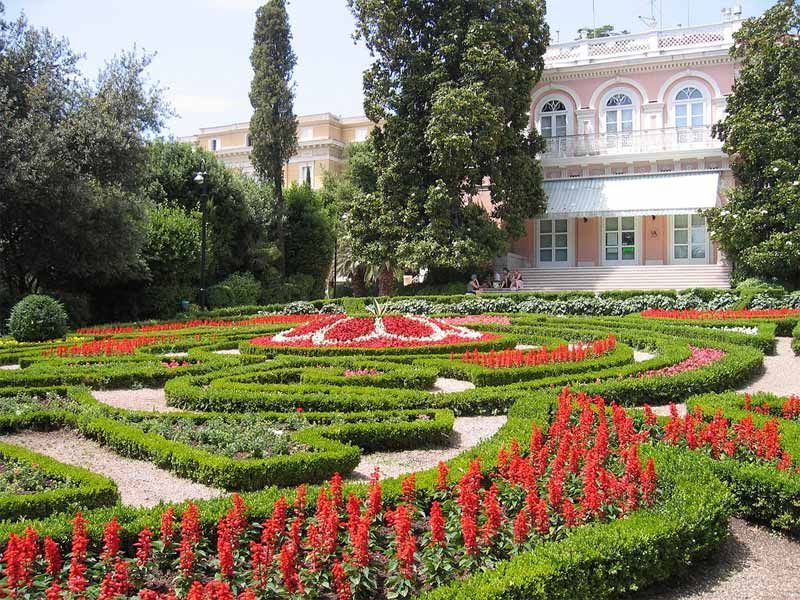
- Its actual health tourism dates back even longer – 170 years.
Croatia’s health tourism may have been behind the oldest organised tourism in Europe, but it was offering health tourism even earlier – for more than 20 years in fact. Another of Croatia’s top Adriatic wellness destinations today is Opatija, whose opulent 19th-century buildings are testament to the town’s importance. It was one of these fine buildings where tourism in Opatija began. The construction of Villa Angiolina by Iginio Scarpa back in 1844, a fine building which still exists in splendid isolation in an Opatija park, opened the way for the rich and famous to recuperate in Opatija’s healthy climate and medical facilities.
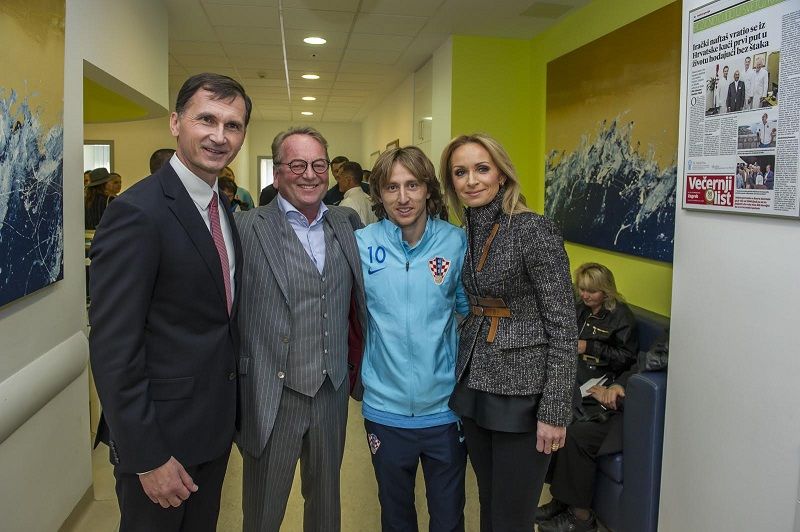
- Some of the world’s top sportsmen use Croatia as their clinic of choice.
Some of the world’s top sporting stars come to Croatia for treatment. St. Catherine’s Specialty Hospital in Zabok has a very impressive list of international starts among their satisfied patient list. The list includes both the Croatian national football and Croatian Olympic teams, and individual stars such as Garry Kasparov (former World Chess Champion), Marin Čilić (Winner of the US Open 2014), Aleksandr Viktorovich Khoroshilov (the first Russian male to win a World Cup race in Schladming, 2015) Gordan Giriček (NBA player: Memphis Grizzlies, Orlando Magic, Utal Jazz), Bojan Bogdanović (NBA player: Brooklyn Nets), Mario Mandžukić (Juventus), Luka Modrić (Real Madrid) and Ivan Rakitić (Barcelona).
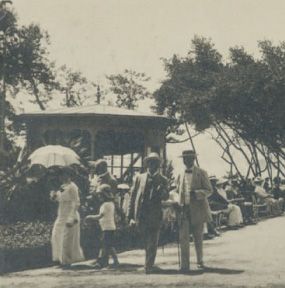
(Photo credit www.bevanda.hr)
- Today’s famous medical patients follow in a long line of tradition.
Croatia’s celebrity health tourists are nothing new, however, as The Daily Telegraph noted in a feature on Opatija a few years ago:
“By the time the railway from Vienna reached Opatija in 1873, it was becoming a sort of “Nice of the East”, with glorious fin de siecle architecture, villas, sanatoria, pavilions, gardens and stylish esplanades for its wealthy and distinguished visitors.
“This was Opatija’s golden age. Among its visitors were Archduke Ferdinand and his queen, Maria Anna; Russian Tsars and European royalty; celebrities and artists such as Puccini, Chekhov and Isadora Duncan. Opatija’s mild climate was said to have curative powers, and some visitors – such as Gustav Mahler – came to convalesce.
Isadora Duncan stayed in a villa overlooking one of Opatija’s several exotic gardens. Beneath her window, she noticed a palm tree. “I have never seen a palm tree growing so free. Every day I contemplated its leaves flickering in the morning breeze, and it taught me that gentle trembling of shoulders, arms, fingers . . .”

- Croatia has a long history of pharmaceutical research, dating back almost 100 years.
There is a long history of pharmaceutical research in Croatia, starting in 1921 when the first pharma company, then called Kastel, later Pliva was founded. In 1980 the original, proprietary antibiotic, azithromycin (in Croatia and most of Europe called Sumamed, in the US and Western Europe Pfizer licensed it and sold it as Zythromax) was developed, making Croatia a member of a very exclusive club of only 10 or so countries in the world where a new, original medication was created and brought to the market.
There have been important medical first in Croatia’s medical history, including the use of iodine tincture, used almost universally before the invention of complex antiseptics, which was first applied in surgery by an Istrian doctor by the name of Antonio Grossich. Viktor Finderle, the grandfather of a currently-working gynaecologist Aleks Finderle, was the first to invent the obstetric vacuum extractor! Professor Andrija Štampar was among the founders of the World Health Organization. (With thanks to Josip Sore)
- Medical research which continues today.
Currently physicians and scientists from St. Catherine’s hospital are continuing with several studies in order to investigate the potentials of adipose tissue-derived stromal vascular fraction in regenerative and reconstructive medicine. The importance of the results collected by the Croatian scientists is best demonstrated by the fact that osteoarthritis is one of the most common health problems in the world, from which more than 400 million people suffer. And, it is predicted that by 2030, more than 700 million people will suffer from this disease. According to available data, about 25% to 30% of the population in Croatia suffers from OA, while the number of OA patients in the United States is over 50 million.
Right from the start, the Hospital has brought together eminent experts who are constantly and systematically involved in continuing medical education as a guarantee of providing superior healthcare service to our patients. Furthermore, the physicians of the St. Catherine Hospital are affiliated with all four medical schools in Croatia while the hospital itself is a teaching hospital of major universities and medical schools, and it is licensed to carry out research in bio-medicine. It is not only the Ministry of Science and Education that has recently announced how the St. Catherine Hospital became “Scientific Center of Excellence for the Personalized Medicine in the Republic of Croatia”, but St. Catherine is as well a part of Consortium that includes the top healthcare and scientific institutions in the country. European Commission did the same and several years ago awarded our hospital, along with other consortium members from Europe, USA, and Australia with the “Pain Omics” project, totalling of 5.9 M Euros.
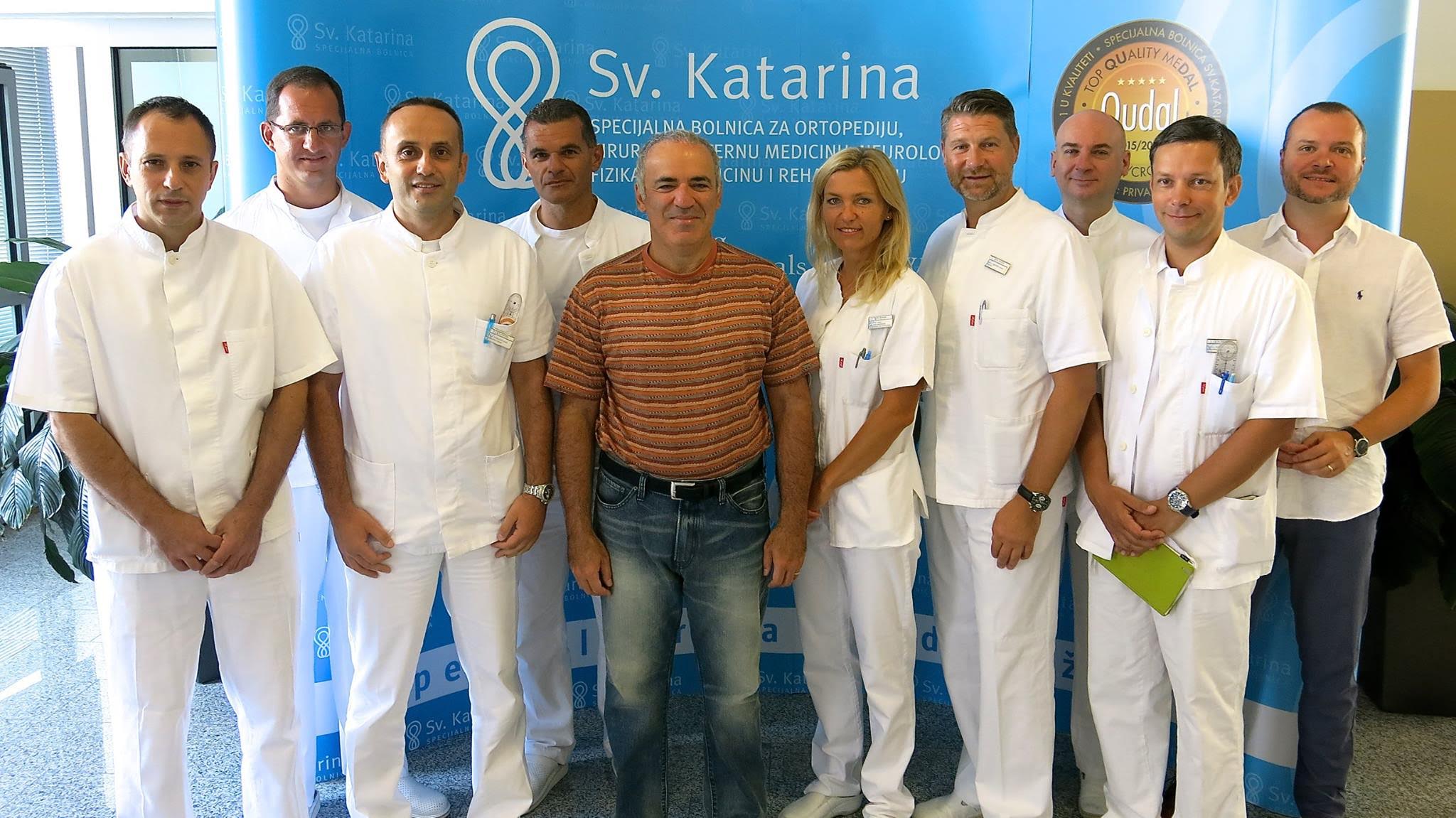
- Meet the shining star of Croatia’s health tourism potential – St Catherine’s Specialty Hospital.
St. Catherine’s Specialty Hospital is a proud member of the prestigious group “The Leading Hospitals of The World”, while In June, 2015, The International Certification Association (ICERTIAS) announced that St. Catherine’s won the top-Quality medal (QUDAL – QUality meDAL) along with an award of St. Catherine’s being the best private hospital in the Republic of Croatia, which is all according to the customer’s/patient’s opinion and judgement. It is also worth mentioning how during the studies, the ICERTIAS was using CAWI – DEEPMA (Computer Assisted Web Interviewing – Deep Mind Awareness) methods in order to analyze and examine all the received data.
St. Catherine Specialty Hospital’s membership in the International ICERTIAS Customers’ Friend programme – “Because we care about our customers”, attests to the special care and attention that Specialty Hospital give to patients and their problems, as well their commitment towards developing long-term customer satisfaction from the very beginning – from the first phone call up to the final phase of treatment.
Nevertheless, the “Super-brands organization” based in the Great Britain (since 1995), has proclaimed St. Catherine in July 2016, as one of the strongest and the most successful brands in that year, thus, along with that, St. Catherine won “Croatia Superbrands 2016 Award” regarding its quality, reliability and distinction.
On November 6th, 2015., Ministry of Science, Education and Sports of the Republic of Croatia announced that the St. Catherine Hospital become “Scientific Center of Excellence for the Personalized Medicine in the Republic of Croatia” as a part of Consortium that includes the top healthcare and scientific institutions in the country and such fields.
In April 2017, St. Catherine was awarded the “Best Hospital Award” for the strong position at the national market and in international sector ratings, successful implementation of modern management technologies, staff excellence and the efficient marketing strategy by the Europe Business Assembly, Oxford, UK.
In April 2017 St. Catherine hospital has won a major international medical tourism award for their efforts in attracting international patients to Croatia. St. Catherine Specialty Hospital was named “International specialist patient centre of the year” by medical travel publication the International Medical Travel Journal Medical Travel Awards 2017 at their annual awards ceremony, the IMTJ Medical Travel Awards 2017.

- Meet Zagreb, Lonely Planet’s Number 1 Destination, and the new rising star of medical tourism in Europe.
When medical excellent meets tourism excellence. Add in an extremely competitive price list for a range of services, and it is not hard to see how Croatia has huge potential as an outstanding health tourism destination. While much of its tourism is centred on the coast, including health facilities in regions such as Istria and Kvarner, the capital Zagreb is showing the most potential for offering outstanding service.
Until recently, Zagreb was hardly considered a significant tourist destination at all, but in recent years, the capital has undergone a tourism transformation, so much so that Lonely Planet named it the top destination in Europe for 2017. With more than a million tourists staying in the city each year, Advent in Zagreb – a recent event which has been voted the best Christmas market in Europe for the last two years – is symbolic of the city’s new tourism profile. A new 330-million euro airport terminal was opened this year, and a plethora of airlines are connected Croatia with the rest of Europe and beyond. In addition to Qatar Airways operating ten flights a week to the world via Doha, Emirates began operations from Dubai, while Air Transat is set to be joined by Air Canada in 2018 offering direct flights from Canada. Air Jin’s new direct service from Seoul is the latest intercontinental route to be announced, making Zagreb more accessible than ever from all parts of the globe.
Many of Croatia’s leading clinics are located in the capital and are able to accommodate patients in partnership with luxury hotels. Perhaps the best example of this is Bagatin Clinic, whose tenth-floor premises in the Double Tree Hilton Hotel is an ideal location for patients enjoying the comfort of this four-star hotel. The accessibility of Croatia’s coast also means that an Adriatic holiday can be an added bonus to the treatment, a holiday which is effectively free given the savings on offer with this excellent Croatian care.
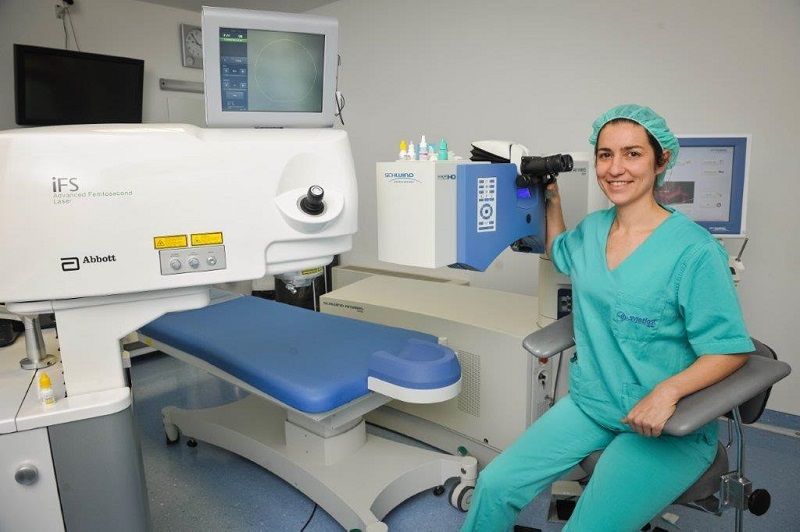
(Maja Bohac, PhD, Head of Refractive Surgery Department at Svjetlost)
- Croatia is a film set for Oscar-winning movies such as Fiddler on the Roof, but also for Oscar-winning surgical excellence.
Croatia the film set. Famous today for Game of Thrones, Star Wars and Mamma Mia 2, Croatia has a rich filming history, which has included providing locations for Oscar-winning movies such as Fiddler on the Roof and Sophie’s Choice, but have you ever heard of the ophthalmology Oscars? In 2015, a team of four expert surgeons from Eye Clinic Svjetlost won “Best Live Surgery Award” for performing five complicated eye surgeries in only 60 minutes at the world’s largest video surgeon congress VideoCatarattaRefrattiva in Milan. The award is also known as an ophthalmology Oscar due to its prestige in this profession. You can watch the complete surgical video HERE.
The quality of Eye Clinic Svjetlost has been recognized by several international awards obtained over the years. In 2016 in Cannes, the Clinic was awarded the prestigious “Best Regional Hospital” award for excellence in quality and management, while in Berlin Svjetlost was awarded the “Quality Choice Prize” intended for the best global companies.
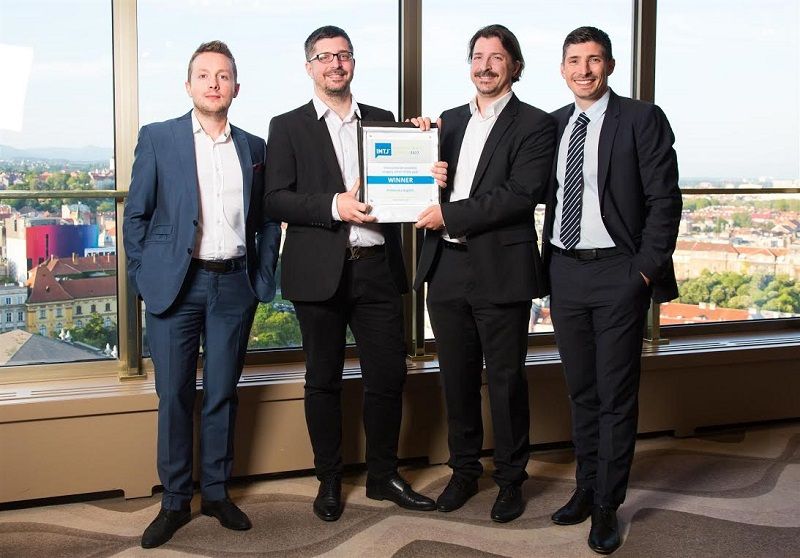
- Bagatin Clinic is a global player for cosmetic surgery – just ask the International Medical Travel Journal.
Bagatin Clinic in Zagreb has been recognised by IMTJ as the “Best international cosmetic surgery clinic” – the IMTJ organisation celebrates the excellence of service providers’ achievements around the world awarded Bagatin Clinic for “Best International Cosmetic Surgery Clinic” in 2017. Every year the best of the best are awarded in 19 categories. Nominations came from all over the world, making the award for the best international clinic even bigger.
- Goran Visnjic (ER) may be Croatia’s most famous actor, but real Croatian doctors are doing groundbreaking stuff – meet Dinko Stimac.
The most famous ‘doctor’ of Croatian origin might be ER heartthrob Goran Visnjic, but real Croatian doctors are doing groundbreaking work, such as Dr. Dinko Stimac.
Dinko Stimac M.D., the head of the Neurosurgery Department at the Clinical Hospital Center in Rijeka (KBC) was the first neurosurgeon in the world to carry out a procedure of implanting a 3D-printed fully acrylic artificial vertebra! The implant was used to replace a metastasized 7th cervical vertebra of a 77-year-old patient who was suffering from a malignant disease. After that, he went on to perform other groundbreaking neurosurgical procedures, most notably the most complex surgery of his career so far, on a 70-year-old patient who presented with an extremely rare type of malformation of cerebral blood vessels. Dr. Štimac said that this was the first time he faced such a complex malformation in 21 years of surgical practice, but he and his team managed to remove it, and the patient has recovered as well as can be expected for a person his age. The surgery was observed online by medical students from Spain and Portugal. Read more.
- Croatian medical excellence is recognised by Gene Journal.
In a recent study published in Genes Journal the scientist from St. Catherine’s hospital showed that the use of adipose/fat tissue derived stromal vascular fraction (SVF) containing mesenchymal stem cells (Ad-MSCs) in patients with knee Osteoarthritis (OA) (measured by dGEMRIC MRI) increased glycosaminoglycans (GAGs) content in hyaline cartilage, which is in line with significant pain reduction measurement by Visual Analog Scale for Pain (VAS) as well as with improved knee function and a quality of life.
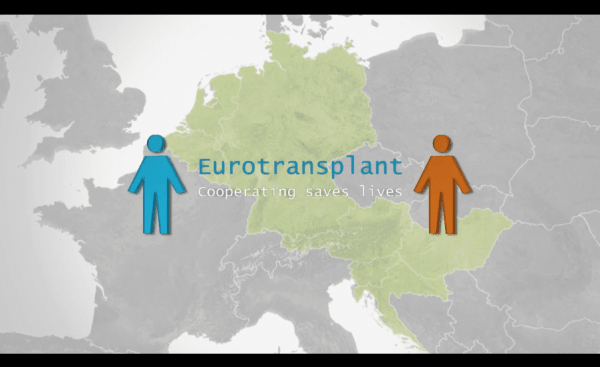
- Croatia is number 1 in the world for organ transplants (Eurotransplant).
Eurotransplant is a central database of organ donors and patients waiting for the transplantation of a donated organ, founded in 1967 (Croatia has joined in 2007). Out of its member countries (Austria, Germany, Slovenia, the Netherlands, Luxembourg, Hungary and Belgium), Croatia was able to become the most successful member and one of the most successful countries in the world. In Croatia, there are between 350 and 400 organ transplantations per year, which is a very high average. By a series of indicators, Croatia is statistically the best country, not only in Europe but also in the world. With 40 donors per million inhabitants, Croatia is the first in the world. The country is also at the first position in the world by the number of liver transplants, of which about 115 are performed each year, which means that Croatian patients have the highest availability of this type of transplantation, which is considered to be the most complex. By the number of liver transplantations, the Merkur Clinical Hospital in Zagreb is the largest centre in the Eurotransplant network. Read more.
The Chairman of Eurotransplant Bruno Meiser has spoken about the Croatian model: “It is complicated to copy the Croatian model because it requires a high level of solidarity in society, an excellent organisation, highly skilled and dedicated emergency services which are active throughout the year and, above all, dedicated doctors and national coordinators who live for this job.”
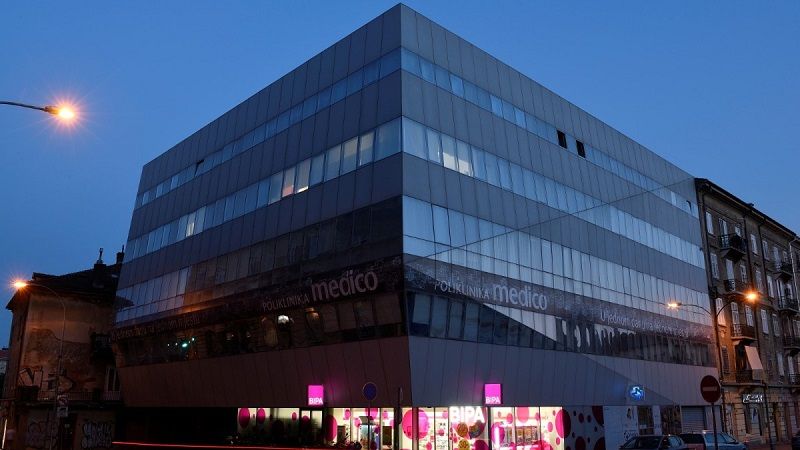
- Specialty Hospital Medico in Rijeka – AACI.
The Specialty Hospital Medico in Rijeka is widely known for their motto ‘in one day, at one place’ – and they stay true to their word. Due to an incredible range of diagnostic services and medical treatments provided in a three-floor polyclinic in the centre of the city, Medico has a respectable reputation both locally and among patients visiting from abroad.
Medico was recently awarded the AACI certificate for clinical excellence, becoming the first health clinic in Croatia – both in the public and the private sector – to hold this prestigious title. AACI (American Accreditation Commision International) is one of the world’s most renowned organisations that provide clinical accreditation which stands as a guarantee of high-quality medical services, health care and patient safety in all certified institutions.
The importance of such an accreditation goes far beyond Medico’s reputation and profit. As the AACI certificate is a precondition for most foreign insurance companies to reimburse the medical expenses of patients who seek treatment outside of their home country, this international accreditation is a valuable incentive for Croatia’s health tourism development.
It is expected that medical tourism will become one of the leading reasons for travel in the coming years, and to make for a staggering 22% of world’s GDP by 2030. In a country that’s steadily becoming one of the leading destinations for health tourism, an international accreditation of this kind opens the door for an increase in visitors coming to Croatia with the sole goal of getting medical treatment.
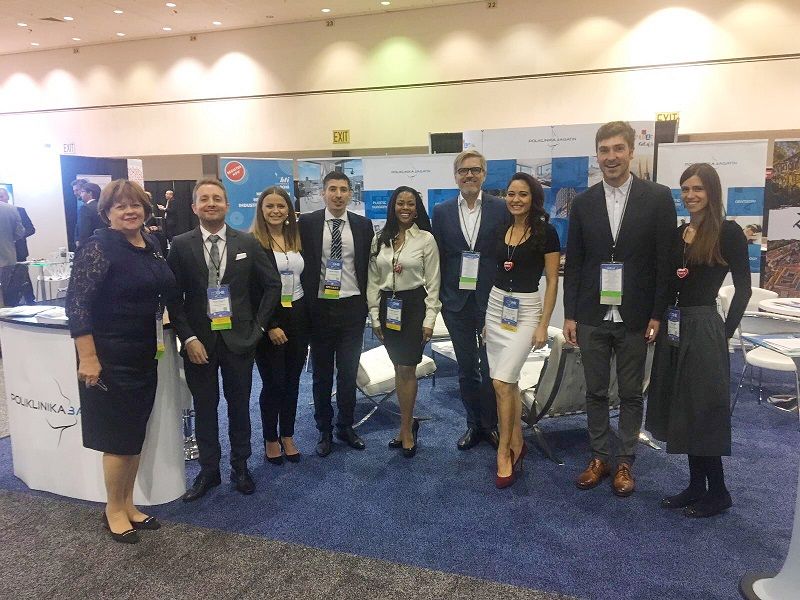
(Croatian medical excellence in California – Bagatin Clinic at WMTC in Los Angeles earlier this year)
- Pioneering medical tourism initiatives from Bagatin Clinic
Croatia is not (yet) on the world map for health tourism, something which is set to change. A key component of that change is promoting Croatia’s excellent medical story internationally, and nobody has done more in this regard than pioneering CEO Ognjen Bagatin, from the family clinic of the same name. Grasping the need to promote the story so as to attract more business which would allow revenues from more international clients to grow Croatia’s medical tourism sector more quickly, Bagatin has dragged others with him in the pursuit of telling Croatia’s health tourism story.
His polyclinic alone is punching above its weight on the international stage in terms of marketing budget, a strategy which is already bearing fruit, both for his clinic and the country’s health tourism as a whole. Bagatin Clinic was a gold sponsor at the recent World Medical Tourism & Global Healthcare Congress in Los Angeles.
The Ministry of Tourism, Ministry of Health, Croatian Chamber of Commerce, Croatian Tourist Board, Zagreb Tourist Board and medical clusters (Zagreb and Kvarner) are all working on this important vision – branding and positioning Croatia as a leading Mediterranean destination for medical travellers.
- Digital and hi-tech dentistry – why Croatia for your dentistry?
Dental tourism is developing fast in Croatia, as busloads of Italians come into the country each week to take advantage of the excellent dentistry and fabulous prices. Istria, Kvarner and Zagreb are the leading centres of excellence, with one clinic in Rijeka employing a staggering 120 dentists to cope with the demand.
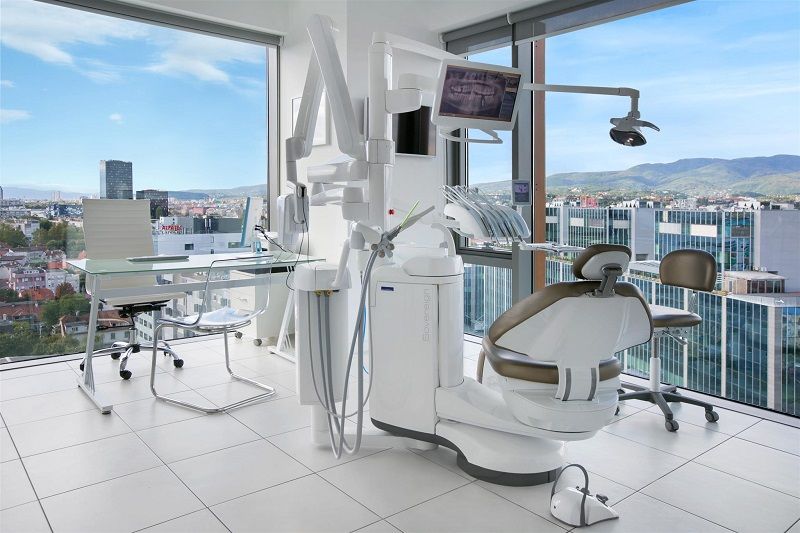
One of the leading clinics is Bagatin Clinic, which also specialises in plastic surgery, dermatology and cosmetic treatments. The latest achievements and innovations in Bagatin Dental Center are related to the use of lasers in the treatments, digital x-rays, production of crowns and veneers in a few minutes within the Clinic, 360° rotating dental chairs that include massages and the software development that associates the patient with any medical practice in the world.
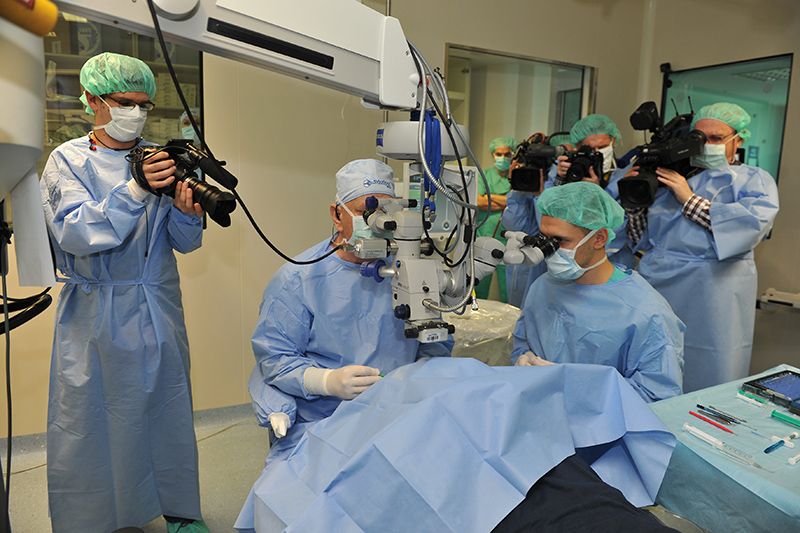
- First eye-laser technology and laser vision correction in the region performed in Zagreb.
Professor Nikica Gabric, founder and CEO of Svjetlost, brought eye laser technology in Croatia and the region and performed the first laser vision correction 20 years ago. So far, more than 60 thousand eyes have undergone laser vision correction in Eye Clinic Svjetlost. Nowadays, laser vision correction is performed by 10 surgeons with the state-of-the-art technology. Moreover, more than 2500 cataract surgeries are performed annually. When it comes to experience in the implantation of multifocal and intraocular lenses with an extended range of vision (more than 10000), Eye Clinic Svjetlost is among the leading European clinics. These so-called premium lenses are implanted both at cataract surgery and presbyopia correction in order to gain excellent postoperative near sight and far sight vision without using glasses.
- The secret is already out – One-third of patients solving their eye problems in Svjetlost Eye Clinic are foreigners.
Over the past 20 years, the Svjetlost has treated over 350,000 patients. During this period, the Clinic has successfully performed over 125,000 operations in its four centres. Out of the total number of patients, one-third of them are foreigners. By professional approach, quality of service and professionalism of its surgeons the Clinic Svjetlost has been widely recognized all over the region. Interestingly, over the past few years, more than 15,000 patients from Slovenia have entrusted the Clinic and its doctors with the laser vision corrections. The quality of service is guaranteed by 40 high-quality ophthalmologists who approach each patient individually and are performing over 5000 operations annually.
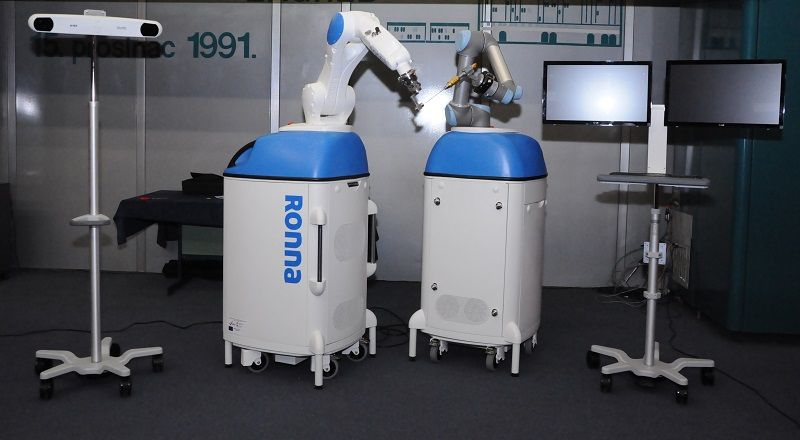
- Meet Robot Ronna.
At the largest European fair of medical technologies this year – MEDICA 2017 – which was held in Düsseldorf, Germany, the Klimaoprema company from Samobor presented its neurosurgical robot Ronna. This is a joint project of Klimaoprema, the Faculty of Mechanical Engineering and Naval Architecture of the University of Zagreb, and the Dubrava Clinical Hospital.
Klimaoprema has taken part in the fair for many years. This year’s presentation drew considerable interest from visitors and potential buyers. The company, in collaboration with the Faculty of Mechanical Engineering and Naval Architecture, has been developing its competencies in the field of robotisation of production and research, development and education projects.
“Connecting industrial and scientific resources contributes to the creation of innovative products that have a direct impact on reducing production costs, saving energy, reducing emissions of pollutants and bringing other societal benefits,” said Klimaoprema. The company from Samobor is globally recognised for its clean room and operating theatre technologies, which linked it to the Ronna project.
In Düsseldorf, Klimaoprema also presented a modern operating theatre with antibacterial walls and ceilings and other elements. Within the operating room, Ronna simulated a precise stereotactic neurosurgeon procedure. The delegation of the Zagreb Faculty of Mechanical Engineering was represented by Professor Bojan Jerbić and lecturers Marko Švaco and Josip Vidaković, while the Dubrava Clinical Hospital was represented by Darko Chudy and Domagoj Dlaka.
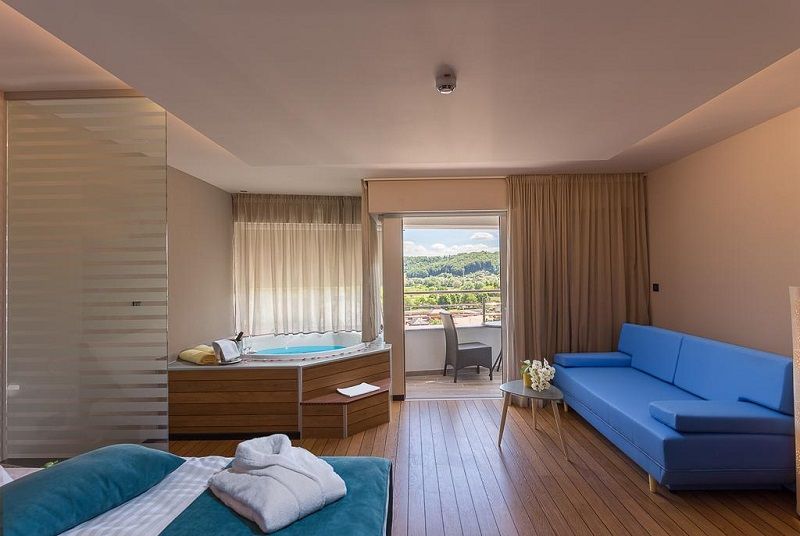
- A strong wellness spa tradition, which continues all over the country today.
Croatia has a well-developed spa tradition, and there are several excellent spa towns all over the country. Spa tourism was disrupted during the regional conflict in the 1990s, when Croatia’s spa hotels were taken over by refugees and the internally displaced. New investments are restoring Croatia’s spa credentials, and nowhere is this better exemplified than in Krapinske Toplice, west of Zagreb. The town’s spa history dates back to 1772, and its waters have been named the sixth healthiest in all Europe. A new aquapark recently opened, as have two private hospitals in addition to the state one already in existence, and in 2009, Villa Magdalena, the first private luxury spa hotel, opened and has been trailblazing ever since. Named as the best hotel in continental Croatia for three years of its short existence, as well as the region’s best restaurant for three years as well, Villa Magdalena is showcasing the potential of Croatia’s luxury spa tourism. A recent purchase by a Chinese consortium will see the town’s outmoded main hotel upgraded to a four-star spa hotel with 200 rooms. Learn more about Villa Magdalena here.
- More excellence from St. Catherine’s – the meniscal transplant.
For the first time in the region, St. Catherine’s orthopaedic team has made a new medical alternative: the meniscal transplant, an hour-long, outpatient, arthroscopic procedure that uses donor tissue to replace damaged meniscus, which can dramatically slow the onset of arthritis. In addition to meniscal transplant, St. Catherine’s has also been successful in applying a new biological treatment: meniscus replacement with the synthetic implant. Furthermore, the St. Catherine’s team is in the process of the integration of pharmacogenetics testings into the clinical practice. Without any doubt, the personalised medicine, with its motto “Right therapy for the right patient at the right time”, is the medicine of the future, thus, an introduction of its concept into daily practice is becoming a priority. St. Catherine’s believes it is the hospital with the lowest percentage of infections (0.6%), compared to any other hospital in South-East Europe.

- Fantastic prices, but with start of the art equipment and the highest quality medical staff.
Health is not something one wants to take a chance on, and there is little point opting for cheap treatment if that treatment is of poor quality using outdated equipment. Here, too, Croatian health tourism delivers, with its clinics using equipment which is on a level of the finest clinics in the world. I asked three clinics to send me a few sentences on the quality of the equipment they use to illustrate the point:
Svjetlost Eye Clinic – For one of the most demanded and performed surgery in ophthalmic medical tourism, laser vision correction, Svjetlost eye clinic uses state-of-the-art machines. Combination of IFS Femtosecond laser for the flap creation (first step of the surgery) and Schwind Amaris excimer laser for cornea reshaping is considered as standard in world’s most recognized eye centres.
Cataract removal specialists have so far performed over 35,000 surgeries, with an individualized approach to every patient when it comes to the selection of lenses best fitting his or her expectations and lifestyle. Cataract surgery is performed without delay, using state-of-the-art technology and intraocular lenses produced by renowned global manufacturers (AMO, Zeiss, Alcon, Baush&Lomb).
Bagatin Clinic – Since part of their mission is to provide their clients with the highest standard of medical service using only top-notch world-renowned technology, Bagatin Clinic uses Romexis Smile Design system which ensures improved communication between the dental team and the clients. It enables clients to clearly express their wishes and expectations resulting in overall and long-term satisfaction on both sides. Another high – end service available in Bagatin Clinic is Planmeca CAD/CAM technology which enables quick and precise production of prosthetic replacements (crowns, veneers, bridges, inlay) offering clients to get new teeth or have new veneers fit in only one visit. In oral surgery they use Straumann dental implants which ensure the best results as they function just like natural teeth and completely replace missing teeth improving self-confidence and quality of life of their patients. As one of the new developments in digital dentistry they offer T-scan system analysis whose precise and actionable data provides the ability to diagnose and treat occlusion accurately and with confidence.
With customer safety being the most important factor during surgical procedures Bagatin Clinic has procured the most modern anaesthetic device which minimizes any possible risks during procedures. During the preoperative consultation, their surgeons use one of the two high-quality Canfield Vectra XT 3D photo simulators that provide a realistic picture of the expected results for the patients. In addition to the new Vectra device, they have developed two new photo studios equipped with professional lighting, cameras, stands and backgrounds on both of their premises. Taking photos of their clients before and after the procedure, enables them to keep track of their improvement and compare the results.
St. Catherine’s Specialty Hospital – St. Catherine’s hospital is very proud of their MRI instrument, state of the art product by Siemens, MAGNETOM Avanto, A Tim System, with a magnetic field of 1.5 T. MAGNETOM Avanto provides a whole new world in the excellent image quality with extremely fast acquisition speeds. The magnetic resonance imaging instrument in St. Catherine’s hospital is characterized by the unique combination of a powerful main magnet and leading gradient technology. Those features combined with the revolutionary technique of image acquisitions make it an invaluable tool for diagnostics – and our instrument is the first of its kind in Croatia! In addition to that instrument, we have two Siemens Acuson X300 ultrasound systems, equipped with Color Doppler technologies that allow us to monitor and show the passage of blood through the body in full colour (used for radiology needs, as well as rehabilitation), and a Philips Epiq 7 ultrasound system.
The operating theatres are equipped with the Carl Zeiss surgical microscope, and a digital Philips Veradius fluoroscope with a C-arm and a flat detector. This instrument is characterized by the high-resolution images and better contrast than in any other instrument and it is also one of its kind in Croatia.
St. Catherine’s Centre for Neurology is equipped with last generation instruments for EMG, EEG and evoked potentials testing, and Centre for gastroenterology has the modern endoscope by Fuji, as well as the state-of-the-art washer-disinfector by Getinge.
- The first private eye clinic in the region was opened in Croatia.
Eye Clinic Svjetlost was founded in 1998 as an ophthalmological polyclinic. In 2010, it became Special Hospital for Ophthalmology and was then given the status of Clinic for ophthalmology at the School of Medicine of the University of Rijeka, making it the first private eye hospital recognized for scientific performance and research in the South-East Europe. Moreover, postgraduate studies and specializations have been performed at the Clinic Svjetlost since then. Nowadays, the Clinic provides services in Zagreb and Split, while in Bosnia and Herzegovina the centre is located in Sarajevo and Banja Luka. The new centres are planned to be open in Serbia and Montenegro in 2018.

(Before and after a visit to Bagatin Clinic)
- So what are the potential savings?
Let’s begin with the most extreme example I have come across, quoting one VERY happy dental client from Bagatin Clinic, who travelled all the way from Atlanta, Georgia to Zagreb:
“The savings were US$90,000. It difficult to learn to smile showing my teeth. Working on it! A lifetime of not showing my teeth when I smiled is hard to overcome! I also thought about the fact that it was going to take up to a year to complete the dental work here in the USA. Getting it completed in 10 Days was fantastic. They were over-engineering the process here. I have also been told that the equipment, overhead and product costs 6-7 times more to purchase the exact same equipment/product from the same manufacturer in the States.”
Typical savings are in the region of 30-100% from Western prices, even from neighbouring countries such as Slovenia, whose citizens are regular visitors to Zagreb clinics, taking advantage of excellent care at a fraction of the cost just a few kilometres away.
One example to demonstrate the price differential this is cataract surgery. Mono-focal cataract surgery in the Netherlands costs 2500 euro for the classic treatment, but only 1200 at Croatia’s leading eye clinic, Svjetlost. In addition to mono-focal cataract treatment, Svjetlost also offers multi-focal lens treatment for 1800 euro, a much better proposition for the patient, and more than 30% of patients opt for the multi-focal option, compared to just 2% in the Netherlands. The reason? Mono-focal treatment is all that is covered by the state health insurance companies. Come to Croatia, and there exists not only better prices and a tourism experience but also the possibility of better care. The potential to team up with international state health insurance companies for mutual financial benefit is mouth-watering indeed.
- The best recommendation is a satisfied client – 3 cases studies, one each from Bagatin, Svjetlost and St. Catherine’s.
And to finish this overview of the potential of Croatia’s health tourism potential, I asked three of the country’s leading health tourism clinics to provide a case study.
St. Catherine’s Specialty Hospital
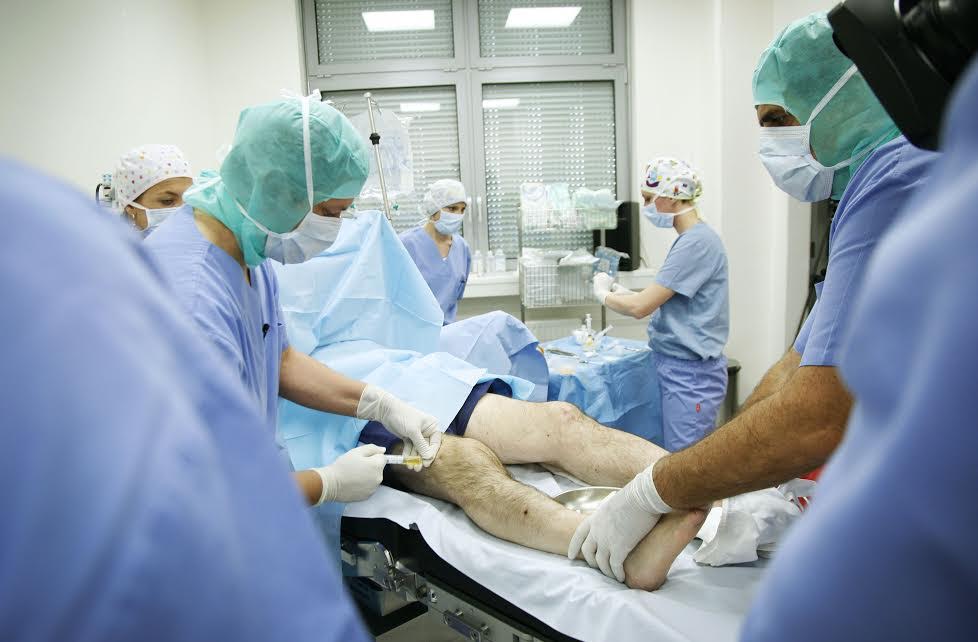
Hello! My name is Darko Retel. I live in Perth, Western Australia. I’ve found out online about this new method (an application of stem cells extracted from fat tissue) of treating the knee. I contacted St. Catharine’s hospital staff in Zabok in May of this year. I was scheduled immediately and operated on May 22nd. I felt improvement within two weeks after my surgery. Now, three months later, I can say that I walk normally and can walk for a longer period of time. The pain in my knee is minimal or almost non-existent. I ride a bike and swim 3 times a week. My surgery was performed by Dr. Hudetz, who also examined me post surgery before my return to Australia, and he was very pleased with my progress. Personally, I am very satisfied because now I don’t have to change my knee, and the feeling of being able to walk normally again is a massive success. I can only say this is “a dream come true”. I would like to express my gratitude to Dr. Hudetz. I’d also like to add that the hospital staff was at a high level of professionalism and service. The hospital itself is very modern and clean and the food is excellent. Once again, I would especially like to thank Ms. Ranogajec, nurse Tihana and all the others that I’ve met in St. Catherine’s.
Svjetlost Eye Clinic
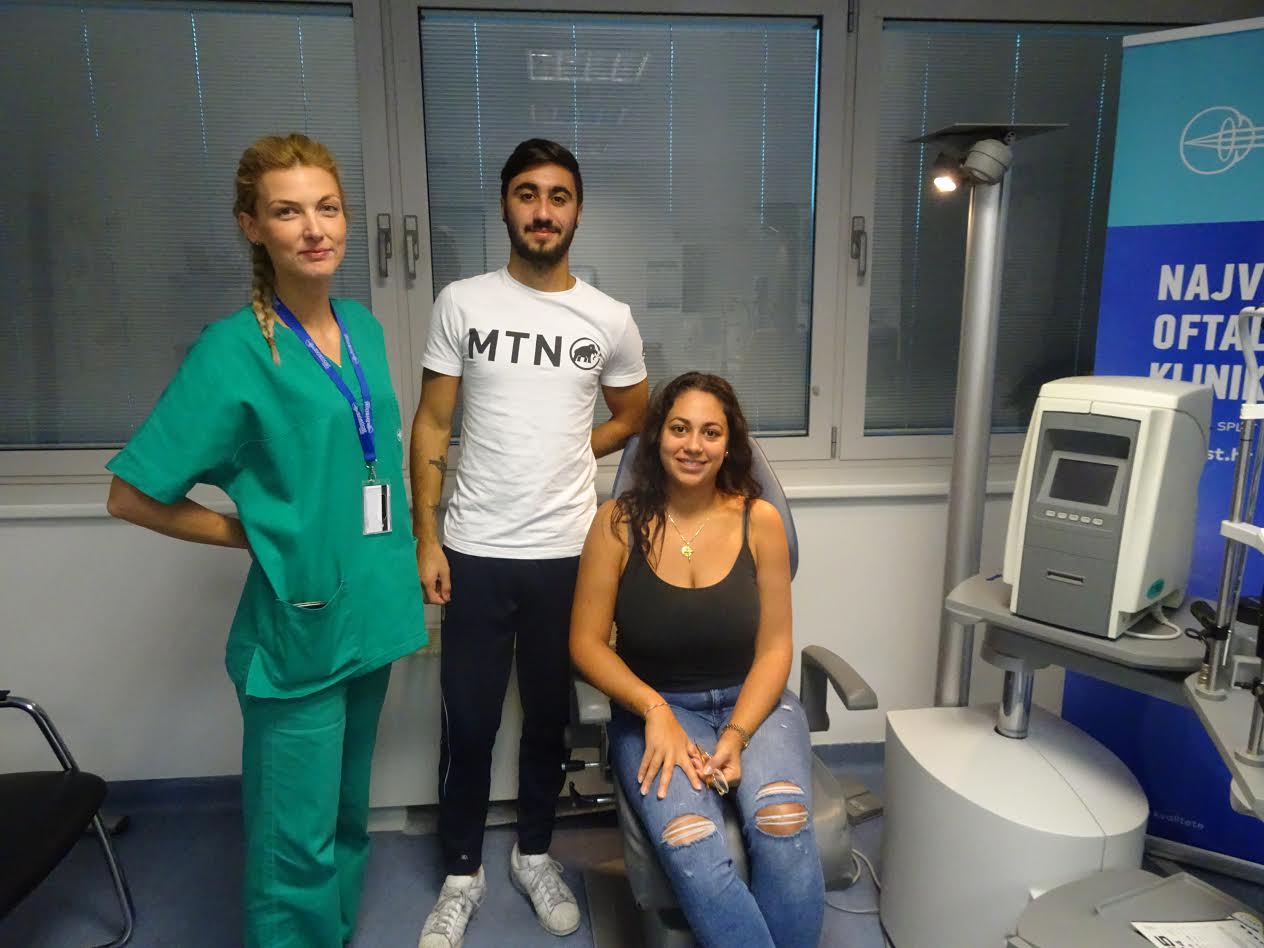
Isabel and Jonathan Gutierrez (Switzerland)
After few years of thinking about laser vision correction we chose Zagreb for treatment due to our colleague’s recommendation. In September 2017, we had the Femto-Lasik method of laser vision correction performed in Svjetlost Eye Clinic in Zagreb. A very efficient, painless and fast treatment due to state-of-the art technology and professional staff. Unbelievable how a whole life can change after a few minutes. A completely new way of life! In compare, the price of the same procedure in Switzerland is 2,5 times higher. Also, we enjoyed our weekend in Zagreb!
Marcello Arnoldi and Monica Küchbacher – Bolzano, Italy
We have had positive experiences of medical tourism in Croatia since before. This is why we choseCroatia to solve our problems of age-related farsightedness. In just two days we completed the whole procedure of implantation the last generation of multifocal lenses. Thanks to Professor Gabric and his staff for professionalism and courtesy. Svjetlost is an excellent eye clinic that we are glad to recommend.
Bagatin Clinic
To learn more about the potential of Croatian health tourism, visit
St. Catherine’s Specialty Hospital

